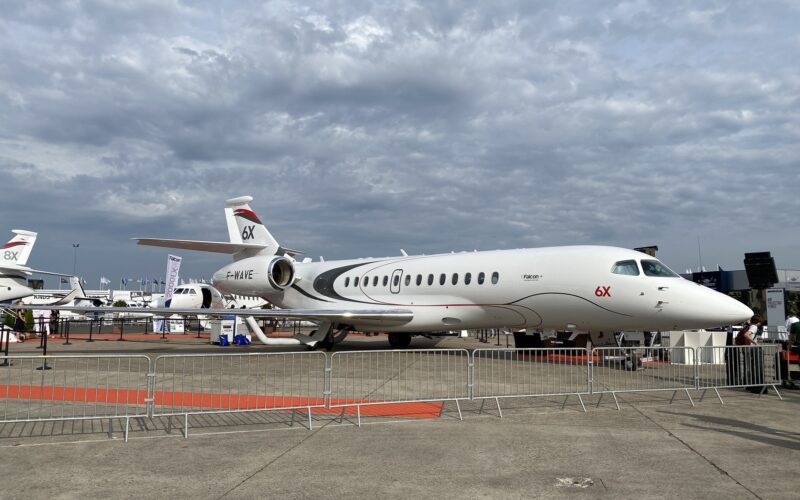Dassault, which is in the process of certifying the Falcon 6X private jet, has requested deviation from the European Union Aviation Safety Agency (EASA), as the jet’s fuel tank design fails to meet the agency’s safe operations requirements.
According to EASA’s document, all fuel tanks, except for tanks that are within the torsion box of high aspect ratio wings and manufactured of light metal alloy, “must be evaluated against all wheel and tyre failure threat models”. Since the Falcon 6X fuel tanks are present in the proximity of the landing gear area, EASA said the manufacturer must “address penetration and deformation [of the fuel tanks] by tyre and wheel fragments, small debris from uncontained engine failure or APU failure, or other likely debris (such as runway debris)”.
However, during the Falcon 6X Type Certification project, Dassault found that two areas of the fuselage tank “cannot sustain the wheel flange debris impact without fuel leakage” and did not show “direct compliance” with EASA regulations. Since “these issues were picked up only at a late stage” of the project, and “schedule and industrial constraints do not allow the finalisation of the redesign”, Dassault has requested a deviation, continued the agency’s document.
The French manufacturer will “develop, certify, and ensure full application of the necessary design changes to make all aeroplanes fully compliant” after EASA issues type certification for the Flacon 6X.
Furthermore, Dassault put forth three mitigating factors that showcase that the aircraft is safe in the meantime:
- Good experience with the current Falcon fleet, which has a similar configuration and similar wheels from the same manufacturer as for the Falcon 6X
- Very few percent of trajectories of wheel debris impacting fuel tanks’ areas that are not sufficiently protected
- No direct spillage on potential ignition source(s).
EASA noted that the “design change will be implemented through retrofit on any individual aircraft delivered with a design that is compliant with this deviation only” and added that Dassault should come up with a plan to implement the design change and retrofit that would limit the exposure to the deviation.
“This should be determined through an analysis to be agreed by EASA. In-service experience from similar designs wheels from same manufacturer, production and operational constraints can be used to support the analytical considerations,” the safety regulator concluded.
EASA is inviting interested parties to comment until July 28, 2023.
Dassault plans for the Falcon 6X to enter service sometime in 2023.
In a similar story in December 2022, EASA requested that Airbus make changes to the design of the Rear Center Tank (RCT) of the A321XLR, the largest and long-range variant of the A321neo family. At the time, the agency said that “the integration of an RCT located below the cabin floor, because of its design and location, is considered as an unusual design feature relative to design practices”.

